 |
MOHAMMEDAN MEDICINE |
 |
|---|
The Man Without a Postage Stamp
It is no accident that unlike all-so-many others, this museum has not been able to locate a postage stamps of Ibn Wahshtya. His real name was (something like) Abii Bakr M. b. 'Ali b. Wahshiya al-Nabafi, and although a devote Mohammedan, he seemed to hate the Arabs and saw them as some sort of inferior race. [Which is probable why he doesn’t have a postage stamp by now] He himself was a Nabatean (whatever that is).
Anyway, Ibn Wahshtya (9th Century) is best remembered today for this book, “The Book On Poisons.” Parts of which (relating to Medical Cannabis) are reproduced below, as translated by:
Medieval Arabic Toxicology: The Book on Poisons of Ibn Wahshtya and Its Relation to Early Indian and Greek Texts By Martin Levey, Transactions of the American Philosophical Society, New Ser., Vol. 56, No. 7. (1966), pp. 1-130.” Text can be downloaded via -- http://links.jstor.org/Note however, that from what I can see he seems rather confused, althought highly quoted. Even Gabriel G. Nahas (a well known anti-Medical Marihuana Doctor), makes reference to his work:
“One physician of the early 10th century, Ibn Wahshiyah, warned of possible complications resulting from use of hashish. In his book, On Poisons, he claimed that the plant extract might cause death when mixed with other drugs.” --- Bull. N.Y. Acad. Med. Dec 1982 p.814
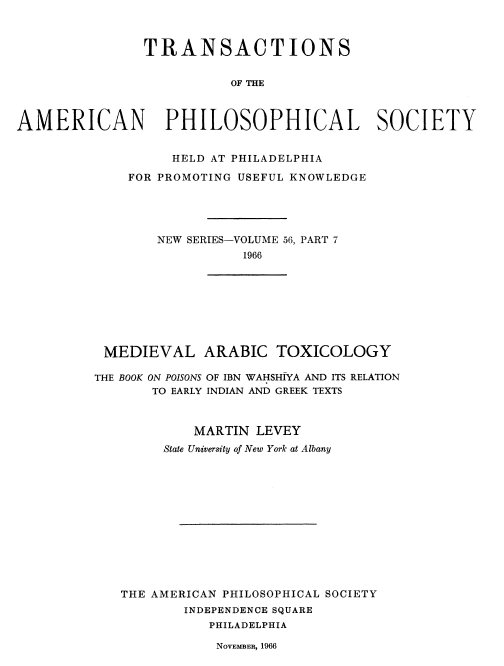
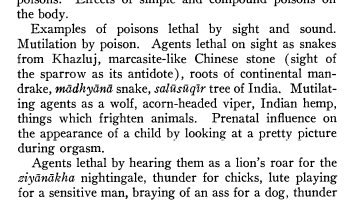
Examples of poisons lethal by sight and sound. Mutilation by poison. Agents lethal on sight as snakes from Khazluj, marcasite-like Chinese stone (sight of the sparrow as its antidote), roots of continental mandrake, midhyiind snake, saliisaqIr tree of India. Mutilating agents as a wolf, acorn-headed viper, Indian hemp, things which frighten animals. Prenatal influence on the appearance of a child by looking at a pretty picture during orgasm. ---- The Book of Poisons by Ibn Wahshtya ; Transactions American Philosophical Society 1966 Vol.56 No. 7: pg11
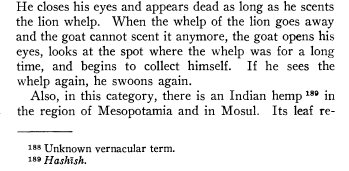

Also, in this category, there is an Indian hemp in the region of Mesopotamia and in Mosul. Its leaf resembles the form of the endive, or just slightly smaller. When it is uprooted and thrown into stagnant water, it causes all the fish in the water, it causes so that the fish rise to the surface to be taken by hand. It is necessary to uproot this hemp while Taurus is ascendant and also throw it into water in that period. ---- The Book of Poisons by Ibn Wahshtya ; Transactions American Philosophical Society 1966 Vol.56 No. 7: pg 27-28

On the Treatment for Drinking Blood of the Bull, Fresh or Not
If a man drinks one Mithqal of this blood at the time of the slaughtering of the bull, then he will die in from six to eight hours. . . . His treatment is that he be made to vomit sufficiently using oxymel, macerated cut-up radish, and boiled juice of dill which had been crushed between the hands. After he vomits by repeating the oxymel [medicine] and the drinking of water so that nothing remains in his stomach, he must eat figs macerated in ivine into which finely pulverized natron has been thrown. When the figs reach his stomach, have him drink exactly one half ratl of simple oxymel which is made up of vinegar and sugar only. Make him drink one-half rail of rainwater. Hurry. Take three mitlzqdls each of hemp seed and root of asafetida, or take instead seed of the black cumin, mustard, and pepper in the same quantities and pulverize them finely. . . . . ---- The Book of Poisons by Ibn Wahshtya ; Transactions American Philosophical Society 1966 Vol.56 No. 7: pg 80
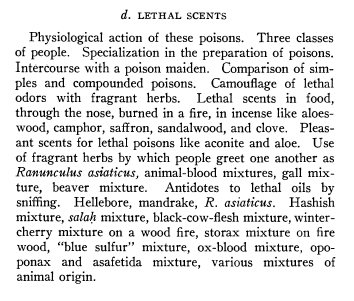
d. LETHAL SCENTS
“Antidotes to lethal oils by sniffing. Hellebore, mandrake, R. asiaticus. Hashish mixture, salah mixture, black-cow-flesh mixture, winter-cherry mixture on a wood fire, storax mixture on fire wood, "blue sulfur" mixture, ox-blood mixture, opoponax and asafetida mixture, various mixtures of animal origin.” --- The Book of Poisons by Ibn Wahshtya ; Transactions American Philosophical Society 1966 Vol.56 No. 7: pg 11

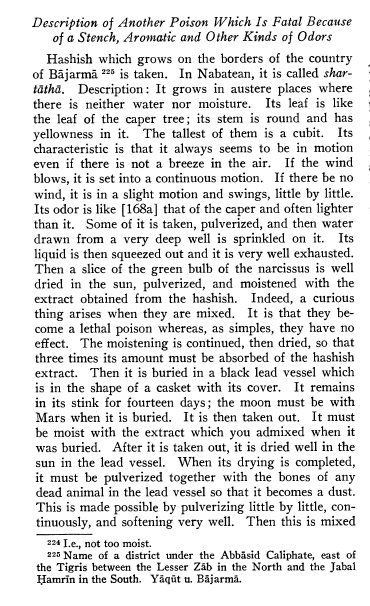
Description of Another Poison Which Is Fatal Because of a Stench, Aromatic and Other Kinds of Odors:
Hashish which grows on the borders of the country of Bgjarmg is taken. In Nabatean, it is called shartdthd, Description: It grows in austere places where there is neither water nor moisture. Its leaf is like the leaf of the caper tree; its stem is round and has yellowness in it. The tallest of them is a cubit. Its characteristic is that it always seems to be in motion even if there is not a breeze in the air. If the wind blows, it is set into a continuous motion. If there be no wind, it is in a slight motion and swings, little by little. Its odor is like that of the caper and often lighter than it. Some of it is taken, pulverized, and then water drawn from a very deep well is sprinkled on it. Its liquid is then squeezed out and it is very well exhausted. Then a slice of the green bulb of the narcissus is well dried in the sun, pulverized, and moistened with the extract obtained from the hashish. Indeed, a curious thing arises when they are mixed. It is that they become a lethal poison whereas, as simples, they have no effect. The moistening is continued, then dried, so that three times its amount must be absorbed of the hashish extract. Then it is buried in a black lead vessel which is in the shape of a casket with its cover. It remains in its stink for fourteen days; the moon must be with Mars when it is buried. It is then taken out. It must be moist with the extract which you admixed when it was buried. After it is taken out, it is dried well in the sun in the lead vessel. When its drying is completed, it must be pulverized together with the bones of any dead animal in the lead vessel so that it becomes a dust. This is made possible by pulverizing little by little, continuously, and softening very well. Then this is mixed with musk, ambergris, camphor, any kind of odoriferous substance, or any aromatics; these are sprinkled on it because it soon sticks to everything, especially to that which has even a little moisture. It may also be mixed with any oil ;it may be used with a mixture of these. If it reaches the nose, a violent tickle occurs in the nose of this man, then in his face. His face and eyes are affected by an extreme and intensive burning; he does not see anything and cannot say what he wishes. He swoons, then recovers, swoons [again], and recovers [again]. He goes on in this way until he dies. A violent anxiety and fainting goes on until he succumbs, after a day, a day and a half, or more. If it is protracted, it may take two days. For these aromatics, there is no remedy. But if God wills to save him, he may be spared from death by the continuance of vomiting or by another natural reaction. ---- The Book of Poisons by Ibn Wahshtya ; Transactions American Philosophical Society 1966 Vol.56 No. 7: pg 43

On Treatment of the Harm Due to Scammony
This is a poison as well as a remedy. In certain quantities it is useful, and in others it is fatal. The useful quantity is from six grains to one and a half dnftiqs. It eases the bile and moisture powerfully. The quantity which is harmful is from one-half mithqdl to one dirham plus a ddniq. The lethal dose is from one and two-thirds dirhams to two dirhams. That which kills in this amount, and is the best, grows in the region of Jeramiqa. It is It is the worst and most deadly, actually the juice of an herb called "hashish" ; its juice is called scammony. The victim who has the mentioned amount in his stomach experiences strong colic in his belly, pain in his liver, much burning in his bowels, intense suffering and anxiety, and a violent pain in his stomach. It may, perhaps, cause dysentery with the scraping of the walls of the intestines to the point where they may not be repaired. If he recovers, it is after a severe effort. It frequently cuts veins of the belly when it meets them, burns them, and makes the blood flow. . . . ---- The Book of Poisons by Ibn Wahshtya ; Transactions American Philosophical Society 1966 Vol.56 No. 7: pg 93
WANT TO KNOW MORE:
=====================
Due to space / download time considerations, only selected materials are displayed. If you would like to obtain more information, feel free to contact the museum. All our material is available (at cost) on CD-Rom format.
CONTACT PAGE
Mohammedan Medicine Back to the Last Section |
 BACK TO MAIN SECTI0N |
Mohammedan Medicine On to the Next Section |